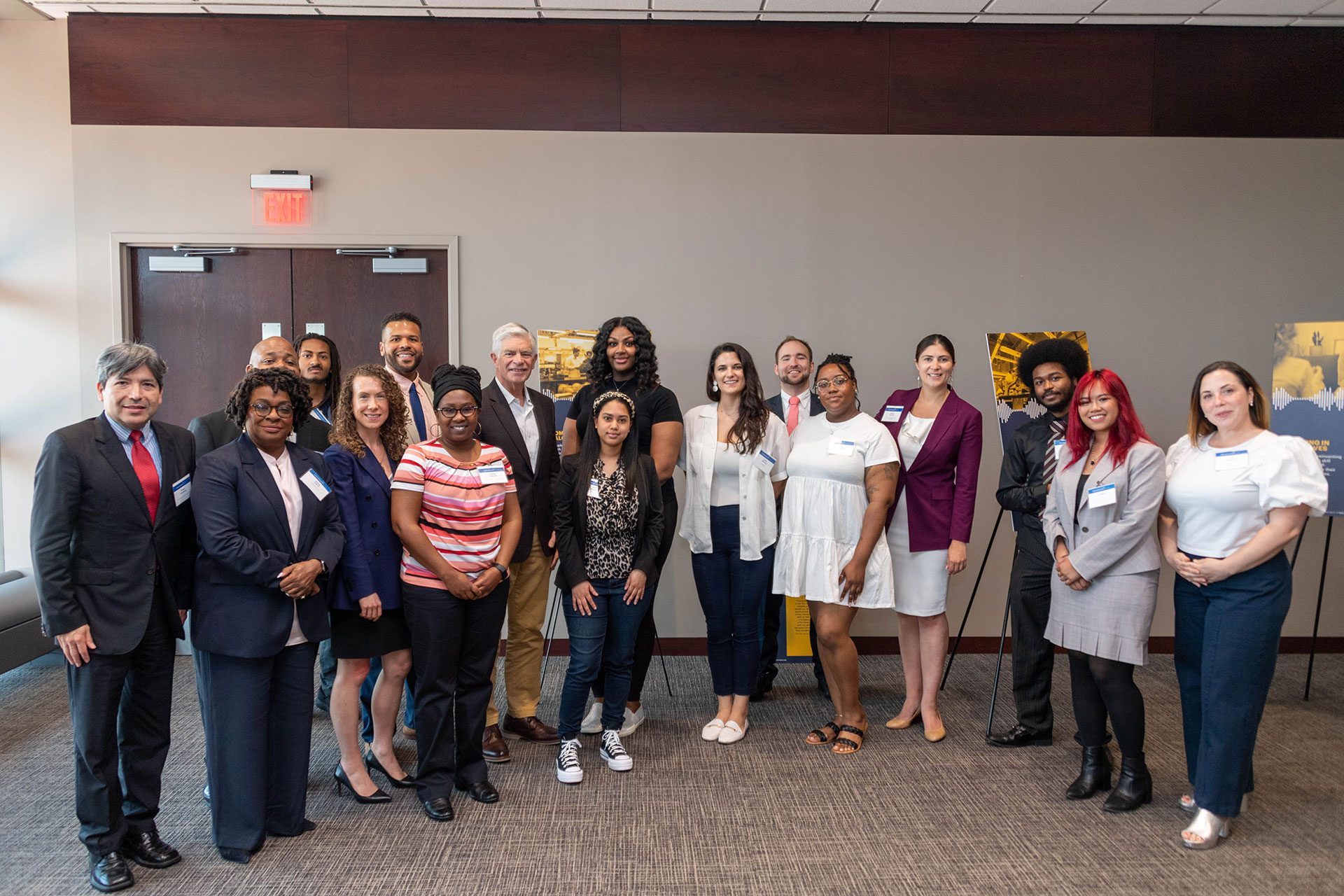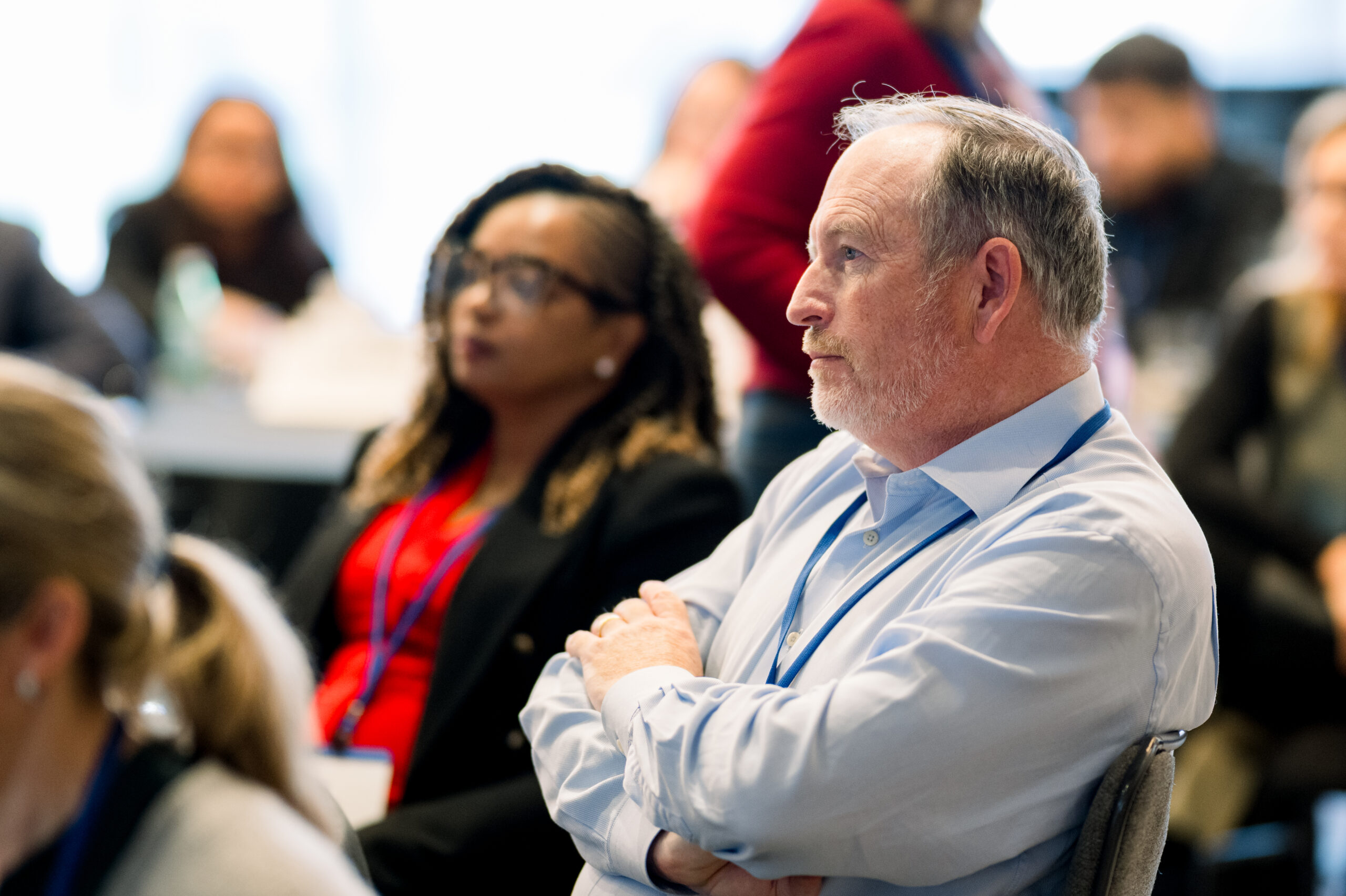Philadelphia Fed Patrick Harker reflects on the Fed’s work in building a more inclusive workforce


By Fed Communities Staff
Since 2015, President Patrick Harker has been a vocal advocate for treating workforce development not as a cost, but as an investment that yields long-term returns for workers and employers. In this conversation, Harker reflects on how that framing has grown more relevant in today’s evolving labor market, where technological disruptions, shifting worker priorities, and the need for cross-sector collaboration are reshaping how we think about skills, opportunities, and economic resilience.
Expenses are one-time things. Many are necessary, but at the end of the day they are viewed as just what they are, a cost. Investments, on the other hand, are made because there is an expectation of a future return – that I’ll make back more than I put in. That’s why workforce development, I believe, must be viewed as an investment.
At the Fed, our work is focused on achieving our dual mandate of stable prices and maximum employment. Workforce development is critical to our ability to meet that second mandate.
It’s not just about employers finding the right workers for their needs right now. It’s equally about hiring that worker who can grow and become even more productive. And, for workers, it’s not just about getting any job because they need one. It’s also about getting jobs where their own skills and abilities can be maximized.
So, viewing workforce development as an investment benefits both employers and employees. It’s about empowering workers to make better-informed decisions to connect to quality job opportunities. It’s about creating a workplace ecosystem where both employers and employees work and benefit.
The immediate aftermath of the pandemic challenged some of the very basic ideas that we held about work and the workforce. There was this great need for workers, while at the same time many employers were reporting to us that they couldn’t fill the positions they were advertising. This struck me and others as more than just basic questions of supply and demand. It indicated that a deeper investigation was required.
At the Philly Fed, we partnered with colleagues from Reserve Banks across the country on a project to go out and talk to workers directly, where they were, to understand the decisions they were making about the jobs they were taking or, equally important, not taking. The Worker Voices Project, a national research effort to understand how workers without college degrees navigated the post-pandemic economy, captured these workers’ insights.
What we learned was that workers were focusing on much more than the wages they were being offered. They were equally focused on more intangible elements. For example, considering whether the job offers flexibility to let the worker care for a child or an aging relative, etc.
The overall shifts in the labor market mirror the growing belief among workers that there is more to a job than the benefits listed on paper. While they want to be compensated for their work, they are willing to wait in some cases for work that is rewarding in both monetary and intangible ways. They want to be treated with dignity and understanding. They want to be seen as more than a line on their prospective employer’s expense sheet; they seek a prospective employer that is going to invest in them and promote workers’ own economic growth and mobility. And we are seeing some of this shift reflected by employers, who are doing more to try to retain the workers they’ve brought on.
Before I was an economist, I was an engineer. Because of this background, I’ve taken a great interest in the technological revolutions that are happening in workplaces across the country and the world. Oftentimes, these advances are being thought of as workplace “disruptors.” Think of AI, which if you rely on the headlines, is on its way to making a human workforce obsolete.
Does this mean businesses should go all-in on investing in AI and stop investing in people? Of course not. Surely, AI is changing the nature of work, but for the foreseeable future at least, there is always going to be a need for a human element. AI can’t train itself; it needs human interactions and interventions to get things right. There’s a lot AI can’t get right. So, there still needs to be investment in people, in workers, so they can put themselves on the leading edge of these technological advances.
“When employers invest in workers and help them to be more productive, their business will in most cases benefit. And when workers feel the impact of that investment, they will feel more valued, which will benefit them in terms of their own professional growth and economic mobility. That is a win–win situation.”
– Patrick T. Harker, President and Chief Executive Officer, Federal Reserve Bank of Philadelphia
Throughout my ten years at the Philly Fed, I have made dozens of visits to communities across the Third District to see and learn how these partnerships are coming together. There are so many incredible stories that I could point to, and I don’t want to leave anyone out.
I would start with our Research in Action Labs, such as in Scranton, Pennsylvania, where we have worked with the local community foundation and regional leaders to address workforce needs. There is also the Reinventing Our Communities Cohort Program (ROC), which helps communities apply big ideas to local issues. Since 2020, ROC has grown into a truly national platform for communities to collaborate with and learn from each other.
Of course, being in Philadelphia, it’s hard not to talk about the “eds and meds” economy. The interplay between our institutions of higher education and the healthcare sector, both in healthcare delivery and in the research-development-commercialization pipeline, is impressive. Collectively, these are the largest employers in the Philadelphia region. We created an entire research project, the Anchor Economy Initiative, to look at the growth of and reliance upon eds and meds nationwide. It’s an eye-opening project.
Finally, I’ll point to a standout example of collaboration I learned about last year when I visited Altoona, a small central Pennsylvania city. Altoona was, quite literally, founded by the Pennsylvania Railroad. Today, its population of 44,000 is roughly half of what it was some 90 years ago. And while the local economy is now dominated by healthcare, as well as retail and services sectors, there is still a need for a skilled manufacturing workforce, given one of the nation’s leading manufacturers of railroad locomotive components remains based in Altoona.
That company partnered with a local university to create a program in which students receive classroom instruction directly from company experts. Students learn everything from research and design to manufacturing, then go into the factory to hone their skills and, potentially, find full-time post-education employment. The partnership is already successful. The community benefits by retaining more of its residents and not seeing them leaving for jobs elsewhere. The employer benefits from knowing their future workforce is coming right from where they’ve operated for decades.
The Philadelphia Fed co-hosted the Economic Mobility Summit in April. The event, which brought together leaders across multiple sectors, including industry, highlighted the importance of investing in one’s workforce as a means for growing a sustainable business. Investing in people improves retention and productivity. It also generates returns in the community. These business leaders—including from Crayola in Pennsylvania’s Lehigh Valley and Central Pennsylvania-based advanced manufacturer JWF Industries—see workforce investments as not just a critical part of their company’s growth, but also because these investments in workers are good for their region.
The bottom line is that investments in workforce development build a more inclusive and equitable economy because a strong and skilled workforce is the backbone of stable and strong economic growth.
When employers invest in workers and help them to be more productive, their business will in most cases benefit. And when workers feel the impact of that investment, they will feel more valued, which will benefit them in terms of their own professional growth and economic mobility. That is a win–win situation.
It really can’t be broken down any more simply than that.
Some of my most engaging conversations sitting around the FOMC conference table were seeded by conversations I had while sitting across smaller tables in communities across the Third District, listening to local voices. These are individuals, whether nonprofit leaders, community bankers, small business owners, local officials, or residents, whose everyday lives aren’t spent analyzing the minutiae of economic data or monetary policy. Yet their lives are very much impacted by what we do. And the most important lesson I learned is that it’s not my job to tell them what the Fed says about the economy; it’s my job to listen to how the economy impacts them and to take their stories to my colleagues at that FOMC table.
Meeting people where they work and live and breaking down the mythical walls of the Fed has been among my most important jobs. As president of the Philly Fed, I have had access to any number of economic datasets. But I always kept in mind that each piece of data in those sets represents not just numbers, but also people. This is where, to me, we need to better connect the “hard” black-and-white data and the “soft” data of relayed stories and observations. The hard data often tells us what’s already happened. The soft data gives us insight into what is actually happening now. That’s a vitally important difference.
What we learn from our outreach is vital to the Fed’s understanding of how communities are faring across the nation. And it’s critical that we connect the Fed’s resources—our data, research, tools, and expertise—with professionals who can make use of them in their roles supporting communities. Keeping research within the walls of our respective reserve banks would be a huge missed opportunity.
In 2020, we launched Fed Communities to share the Fed’s work on economic issues impacting lower-income communities. Fed Communities’ stories, data visualizations, and profiles are helping to connect Fed research with new audiences, so that more professionals can access knowledge and expertise from all 12 Reserve Banks. It’s been a game-changer for community leaders across the nation who can use the Fed’s collective resources to chart better futures where they live and work. Being part of the team that created Fed Communities will always be a great point of pride for me.
As President Harker nears the end of his tenure at the Philadelphia Fed, he reflects on the need to listen to communities and invest in people. In order to create a stronger workforce and more resilient communities, we must uplift workers.

Industrial flex space has become a quiet favorite among sophisticated investors seeking durable income backed by real business demand. If...

Getting an inheritance is the epitome of a mixed blessing. You receive a financial windfall, but the cause is the...

During his tenure as the California Secretary of Health and Human Services, Mike Wilkening cemented his reputation as a steady...